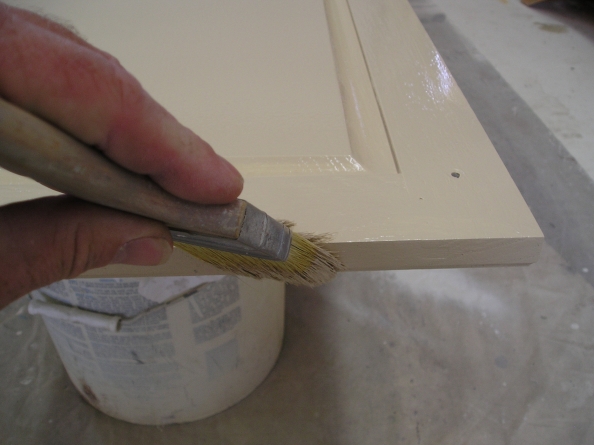A fresh coat of paint can breathe new life into nearly anything in the house – including the cabinets in your kitchen. Painting kitchen cabinets is the perfect route to giving your kitchen a “facelift” without spending a lot of cash.
If you are painting cabinets that haven’t been painted before, you are probably looking for a way to completely change the color by covering up the original wood finish. Make sure to properly prepare the surface so that the paint can adhere to the previous finish. If your cabinets have been previously painted, you have to decide if you want to keep the same color, or go for something new and different.
Preparing the Cabinets
The first and possibly most important step is to clean the cabinets thoroughly. Surfaces in the kitchen tend to accumulate grease, and you need to make sure that any grease, dirt and food residue has been cleaned from the cabinet surfaces.
Remove the cabinet doors, and all of the hardware. Then, sand all of the surfaces carefully with fine grit sandpaper. This is important so that the new paint film will be able to adhere to the original finish. This step can take some time, but it’s very important for a long lasting paint finish. When finished, remove all of the sanding dust from the cabinet pieces, as well as from the room, so that it won’t mar your new paint finish.
Priming
Next, you will want to prime the cabinets. Using primer is always an important step when painting, because it improves the adhesion of the paint finish. Cabinets get a lot of wear and abuse, and without primer, they will have a tendency to chip and flake. This step is especially important if you are painting cabinets that weren’t originally painted, or if the previous coat of paint was especially glossy.
Choose a primer that is designed to go with the paint you have chosen. For example, if you are using an oil-based paint, you should use an oil-based primer as well. Since the cabinet doors have been removed, you can paint these on a table or countertop, placing small blocks of wood underneath them to keep them from sticking to the surface while being primed.
Painting
Once the primer is completely dry, you are ready to paint. Although professionals often paint cabinets with a pneumatic sprayer, home do-it-yourselfers generally use a 2 1/2 to 3 inch brush. Apply a thin layer of paint onto the cabinets, being careful to not apply it too thickly. A thick coat of paint won’t dry as quickly, and it won’t wear as well as several thin coats of paint, and it could even cause the paint to run.
Let the first coat of paint dry completely, according to the paint label instructions, and then apply a second coat. Remember, you will need to take special care with the cabinet doors, since you will need to flip them over to do the other side. If they are not totally dry, they could stick to the wood blocks when you are painting the second side.
Two coats of paint are usually sufficient, but if you were covering a dark original cabinet color with a light paint, you might need a third coat.
Once the paint is completely hard and dry, reassemble the cabinets with the hardware, and enjoy your new kitchen look.


